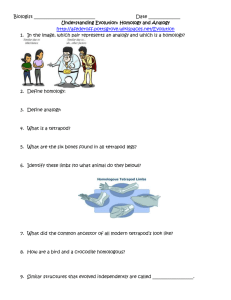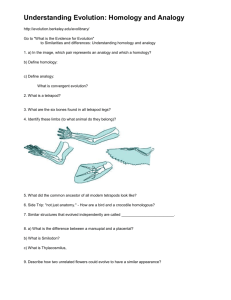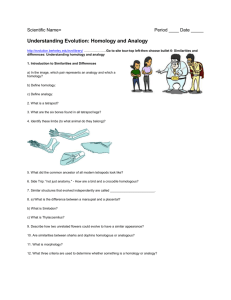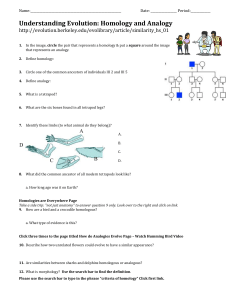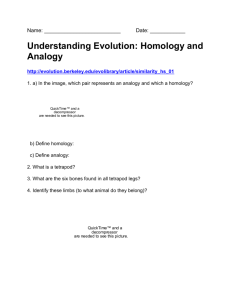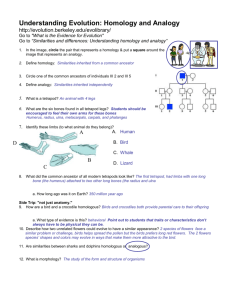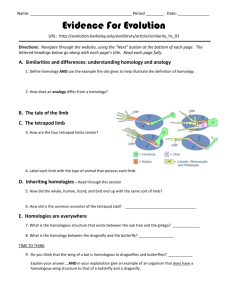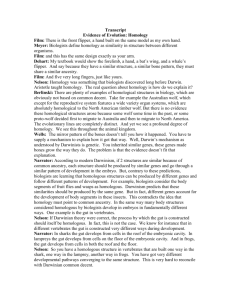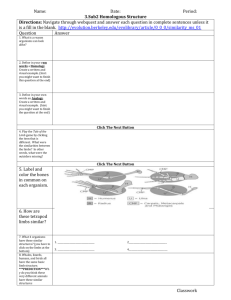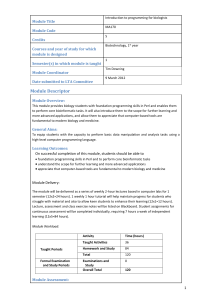Homology and Analogy: Evolution Worksheet
advertisement
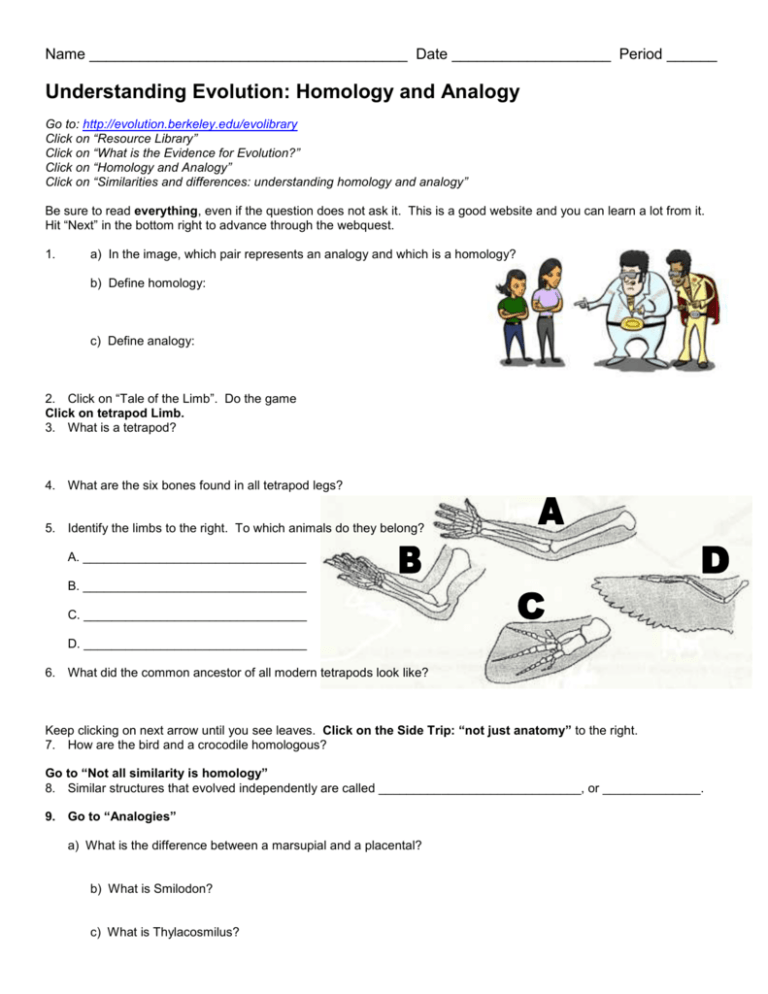
Name ______________________________________ Date ___________________ Period ______ Understanding Evolution: Homology and Analogy Go to: http://evolution.berkeley.edu/evolibrary Click on “Resource Library” Click on “What is the Evidence for Evolution?” Click on “Homology and Analogy” Click on “Similarities and differences: understanding homology and analogy” Be sure to read everything, even if the question does not ask it. This is a good website and you can learn a lot from it. Hit “Next” in the bottom right to advance through the webquest. 1. a) In the image, which pair represents an analogy and which is a homology? b) Define homology: c) Define analogy: 2. Click on “Tale of the Limb”. Do the game Click on tetrapod Limb. 3. What is a tetrapod? 4. What are the six bones found in all tetrapod legs? 5. Identify the limbs to the right. To which animals do they belong? A. ________________________________ B. ________________________________ C. ________________________________ D. ________________________________ 6. What did the common ancestor of all modern tetrapods look like? Keep clicking on next arrow until you see leaves. Click on the Side Trip: “not just anatomy” to the right. 7. How are the bird and a crocodile homologous? Go to “Not all similarity is homology” 8. Similar structures that evolved independently are called _____________________________, or ______________. 9. Go to “Analogies” a) What is the difference between a marsupial and a placental? b) What is Smilodon? c) What is Thylacosmilus? Go to “How do analogies evolve?” 10. Describe how two unrelated flowers could evolve to have a similar appearance. 11. Are similarities between sharks and dolphins homologous or analogous? Go to “Studying homologies and analogies” 12. What is morphology? 13. What three criteria are used to determine whether something is a homology or an analogy? 14. Fill in the blanks of the primate tree: 15. Considering all of the evidence, are the “wings” (actually flaps of skin stretched between the legs) of sugar gliders and flying squirrels homologous or analogous structures? Explain why you would conclude this. 16. Side Trip: See more examples of homology and analogy. How are a venus fly trap and a pitcher plant homologous? 17. Click on next three times until you see the eyes. Explain why we think the gene Pax-6 is an ancient gene 18. Side Trip: Examples of Homology. How are barnacles and limpets alike? How can these similarities be explained?
